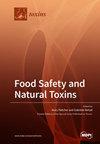Neutralizing Nanobodies against Venoms from Naja haje Species Captured in North Africa
IF 3.9
3区 医学
Q2 FOOD SCIENCE & TECHNOLOGY
引用次数: 0
Abstract
Snakebite envenoming (SBE) remains a severely neglected public health issue, particularly affecting tropical and subtropical regions, with Africa experiencing an estimated 435,000 to 580,000 snakebites annually, leading to high morbidity and mortality rates, especially across Africa and Asia. Recognized as a Neglected Tropical Disease, SBE management is further complicated by the inadequate efficacy of current antivenom treatments. Of particular concern are cobras (Naja sp.), whose neurotoxins can induce rapid fatal respiratory paralysis. In this study, we investigate the potential of nanobodies as a promising next-generation of immunotherapeutics against cobra venoms. Through a dual strategy of the characterization of venom toxic fractions from cobras captured for the first time in Algeria and Tunisia biotopes, coupled with in vitro assays to evaluate their interactions with acetylcholine receptors, and subsequent immunization of dromedaries to produce specific nanobodies, we identified two lethal fractions, F5 and F6, from each venom, and selected five nanobodies with significant binding and neutralizing of 3DL50 (0.74 mg/kg). The combination of these nanobodies demonstrated a synergistic effect, reaching 100% neutralizing efficacy of 2DL50 lethal venom fraction (0.88 mg/kg) doses in mice. Additionally, our findings highlighted the complex mechanism of cobra venom action through the lethal synergism among its major toxins.针对北非捕获的 Naja haje 种毒液的中和纳米抗体
蛇咬伤(SBE)仍然是一个严重被忽视的公共卫生问题,尤其影响热带和亚热带地区,据估计,非洲每年有 43.5 万至 58 万起蛇咬伤事件,导致很高的发病率和死亡率,尤其是在非洲和亚洲。蛇咬伤被认为是一种被忽视的热带疾病,由于目前的抗蛇毒血清治疗效果不佳,蛇咬伤的治疗变得更加复杂。尤其令人担忧的是眼镜蛇(Naja sp.),其神经毒素可诱发快速致命的呼吸麻痹。在这项研究中,我们探讨了纳米抗体作为下一代抗眼镜蛇毒液免疫疗法的潜力。我们采用双重策略,即对首次在阿尔及利亚和突尼斯生物群落中捕获的眼镜蛇毒液毒性组分进行鉴定,结合体外试验评估它们与乙酰胆碱受体的相互作用,然后对单峰驼进行免疫以产生特异性纳米抗体。这些纳米抗体的组合产生了协同效应,对小鼠2DL50致命毒液馏分(0.88 mg/kg)的中和效力达到100%。此外,我们的研究结果还强调了眼镜蛇毒通过其主要毒素之间的致命协同作用而产生作用的复杂机制。
本文章由计算机程序翻译,如有差异,请以英文原文为准。
求助全文
约1分钟内获得全文
求助全文
来源期刊

Toxins
TOXICOLOGY-
CiteScore
7.50
自引率
16.70%
发文量
765
审稿时长
16.24 days
期刊介绍:
Toxins (ISSN 2072-6651) is an international, peer-reviewed open access journal which provides an advanced forum for studies related to toxins and toxinology. It publishes reviews, regular research papers and short communications. Our aim is to encourage scientists to publish their experimental and theoretical results in as much detail as possible. There is no restriction on the length of the papers. The full experimental details must be provided so that the results can be reproduced.
 求助内容:
求助内容: 应助结果提醒方式:
应助结果提醒方式:


